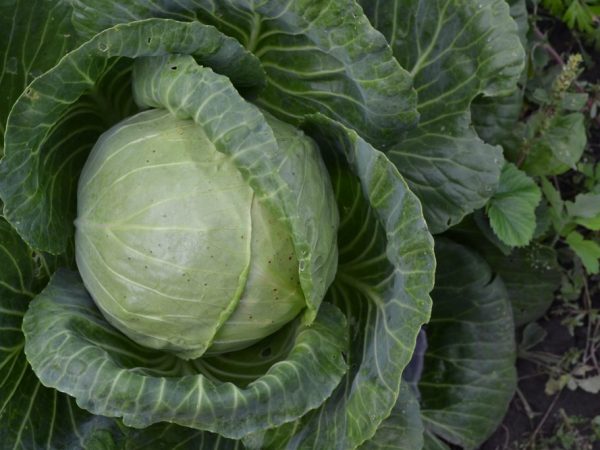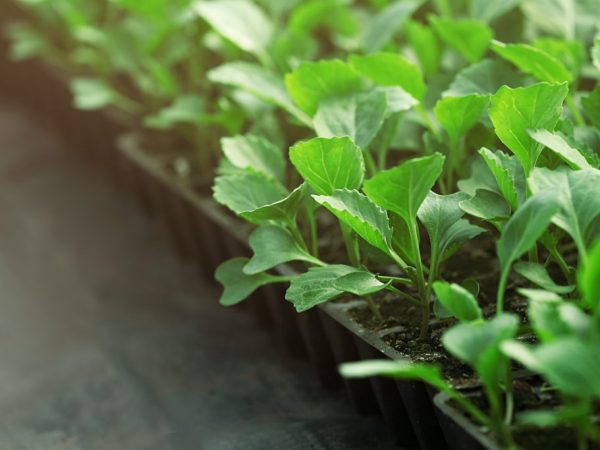Characteristics of Amager cabbage
One of the oldest but still popular varieties is the Amager cabbage. Breeders bred Amager 611 cabbage back in the 20s of the last century. The qualities of this variety allow you to get high yields even from a small area.

Characteristics of Amager cabbage
Variety characteristic
From the moment of seed germination to harvesting, it takes about 145-155 days, so the variety is considered to be late-ripening. In hot summer, these terms are shifted.
Cabbage variety Amager 611 is harvested: up to 7 kg of high-quality heads of cabbage are harvested from 1 m². Its only drawback is its low resistance to some diseases.
Description of the head
In the description of Amager cabbage, the high quality of the heads is noted. The variety has excellent keeping quality and is stored in the basement until late spring. If the room is damp and poorly ventilated, the heads of cabbage can rot. The top leaves and cut are affected first.
Immediately after harvesting, the leaves of the heads of cabbage have a characteristic bitterness, which disappears after 2-3 months of storage. They also become more juicy.
Forks are stored on wooden or plastic pallets, turned upside down. Heads of cabbage are laid in one layer, leaving a small distance between them. Check the condition of the vegetables periodically and remove rotten or moldy leaves.
Application of the vegetable
The variety is suitable for preparing first and second courses, as well as preservation. Cabbage should not be salted and fermented, because its leaves are too tough, and this affects the taste of the finished product.
To prepare fresh salads, the vegetable is finely chopped, salted and intensively crumpled. The finished dish is seasoned with butter, mayonnaise or sour cream.
Landing
Amager cabbage seeds are planted in special seedling boxes. The planting depth of the seed is 1-2 cm. If the seeds are deepened, the period of their germination will increase significantly.
For seeds, use a purchased soil mixture or prepare the substrate yourself. This requires:
- garden land;
- peat;
- sand.
After planting, the seedling boxes are covered with foil and removed to a dark, warm place until the first shoots appear. Seeds germinate together for 5-7 days.
Temperature

Maintain the optimum temperature for seedlings
Seedlings of white cabbage are grown at a temperature of 15-18 ° C.
Disembarkation scheme
Grown plants are planted in a permanent place in May. The garden bed is planned in advance, since when transplanting, the cabbage bush occupies only 2-3% of the total area. In the process of growing and forming heads of cabbage, it already needs about 70-80%. The sprouts are planted at a distance of 40-50 cm from each other. Every centimeter plays an important role in the development of culture.
Fertilizers
Humus and wood ash are preliminarily introduced into the beds. This provides the young plant with organic and mineral components.
Care
Those who planted crucifers know that they are demanding on light.Due to the lack of light, the seedlings stretch out, which affects the ability to form forks, however, in the first days after transplanting seedlings into open ground, the beds are provided with a little shading in the afternoon. This protects the plant from sunburn.
Watering
The culture is watered several times a week. The land should be wet, but no stagnant water. Waterlogging threatens the heads of cabbage cracking. Such forks are no longer suitable for storage.
Top dressing
Timely feeding are also important for planting:
- To improve growth, plants are fed a week after planting in a permanent place. To do this, manure is soaked in water in advance at the rate of 1 kg per 3 liters of liquid. After 2 weeks, fermentation is stopped and the fertilizer is ready for use. It is not used in its pure form, but diluted with 1 liter of the mixture per 10 liters of water.
- When the fork is formed, the plant is fed a second time. For tying strong heads of cabbage, he needs potassium and phosphorus.
- The last top dressing, if necessary, is carried out 2 weeks before harvest. It is best to use an herbal infusion. To make it, weeds are finely cut and soaked in water for 12-14 days. After this mixture in a diluted form is watered plants.
Pests and diseases
The cultivation of this variety is difficult due to its tendency to cruciferous diseases. Everyone who planted Amager notes that most often the plant suffers from:
- Peronosporosis (leaf spot). The causative agent is a fungus. The disease manifests itself even at the seedling stage. Affected leaves dry quickly and fall off
- Powdery mildew (gray spots on heads of cabbage). It spreads quickly throughout the plant and makes the forks unusable for long periods of time.
- Fusarium (the appearance of yellow veins on the leaves). Infected plants form loose small forks or stop growing altogether. The disease enters the ground through the affected seeds.
The main pests of this vegetable are cruciferous fleas, slugs and grape snails. They feed on the succulent greens of the plant and thereby damage the head of cabbage.
Conclusion
Growing Amager white cabbage does not require any special physical or financial costs. The vegetable can be grown commercially. Unlike modern hybrids, it is less resistant to the effects of diseases, therefore, preventive treatment is carried out.


